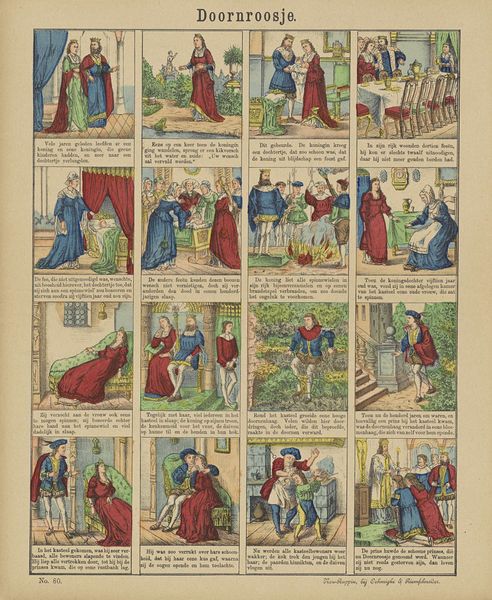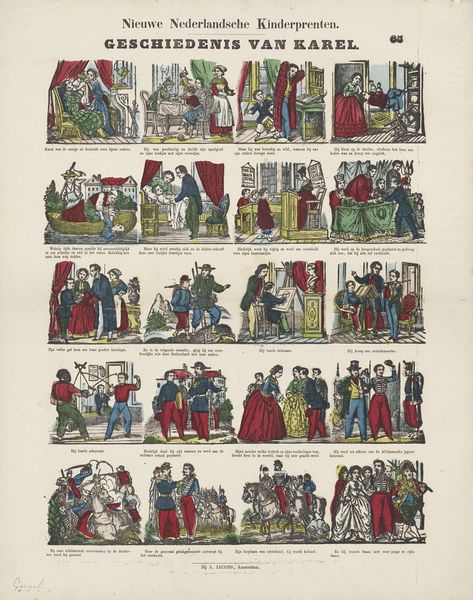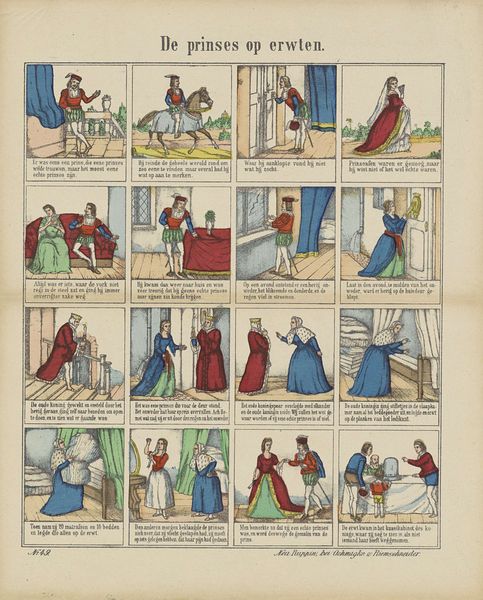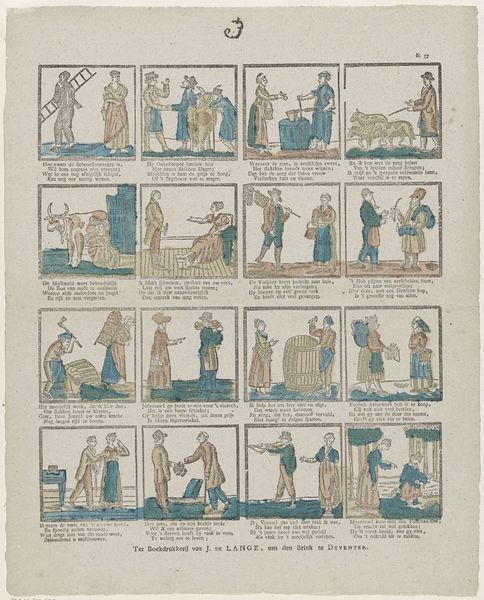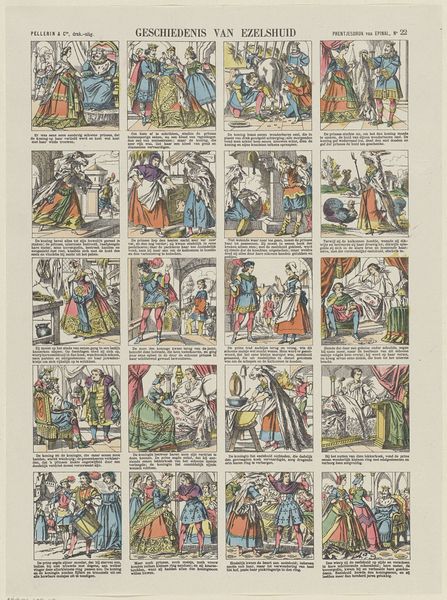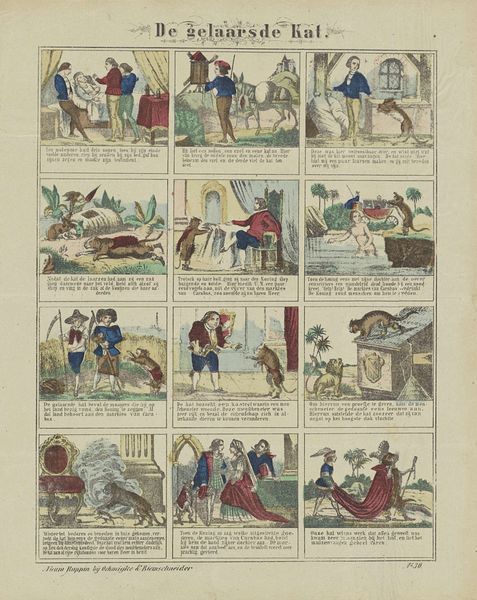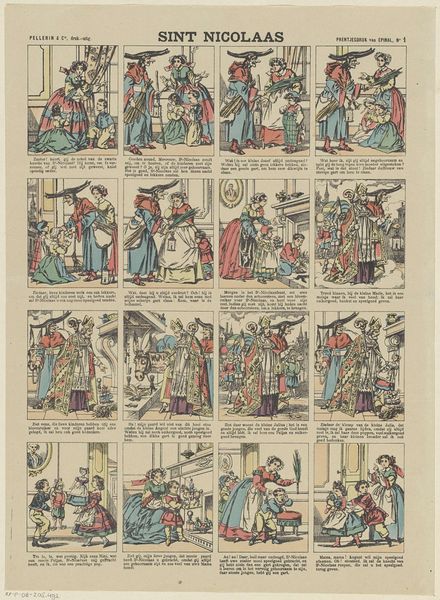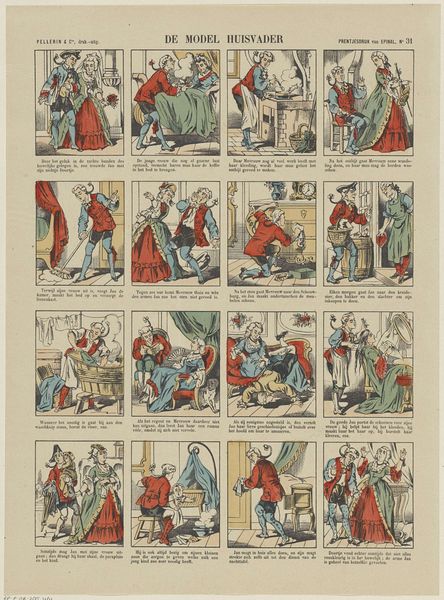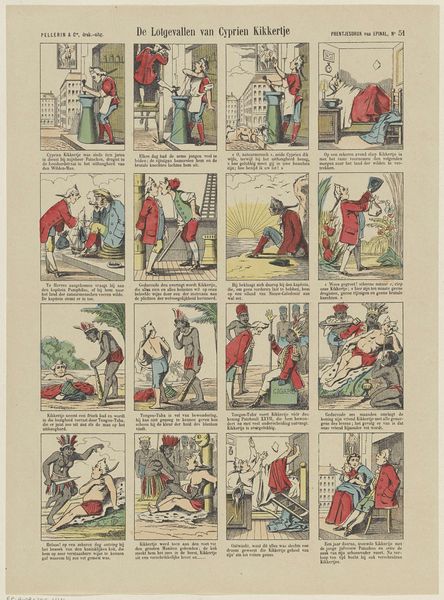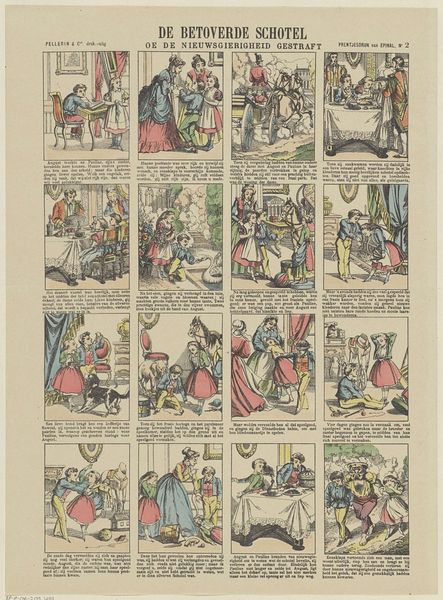
Dimensions: height 418 mm, width 340 mm
Copyright: Rijks Museum: Open Domain
Curator: This lithograph, dating from around 1828 to 1937, is titled "De schoone Magdalena" and is attributed to Oehmigke & Riemschneider. What strikes you about it? Editor: The organization! These sequential panels, each a miniature scene, resemble a comic strip almost. The colour palette is restrained, and lends an air of gentle romanticism despite the narrative’s implied drama. Curator: Right, the panels suggest mass production, don't they? Lithography allowed for cheaper and wider distribution of images, bringing narrative art, such as this romantic tale, to a broader audience than, say, oil painting would have. It raises questions about who consumed these prints, where they were displayed... were they family entertainment? Editor: Agreed. The narrative—though I can’t read the Dutch captions—appears melodramatic: a noble love, perhaps thwarted, maybe even a saintly sacrifice if "Magdalena" is anything to go by. I’m drawn to how the artists have framed each vignette – the careful attention to composition given the potential for haste. Curator: And think about the labour involved. Who designed this? Who transferred that design to the stone? And who printed hundreds, potentially thousands, of these sheets? These artisans were critical to disseminating Romantic aesthetics beyond the elite. Were they even acknowledged? Did their working conditions allow space for creativity, or were they simply copying pre-existing images for cash? Editor: That perspective illuminates so much! It's fascinating how these readily available materials – print, paper, ink – convey this potent narrative in such a digestible form. Thank you for showing me the broader context to unpack this work, I can now better understand the social and economic structures required to build this visual and sentimental impact. Curator: Indeed. These images are more than pretty pictures, aren't they? They're a reflection of complex social and industrial processes that underpin the very act of making and seeing art.
Comments
No comments
Be the first to comment and join the conversation on the ultimate creative platform.
